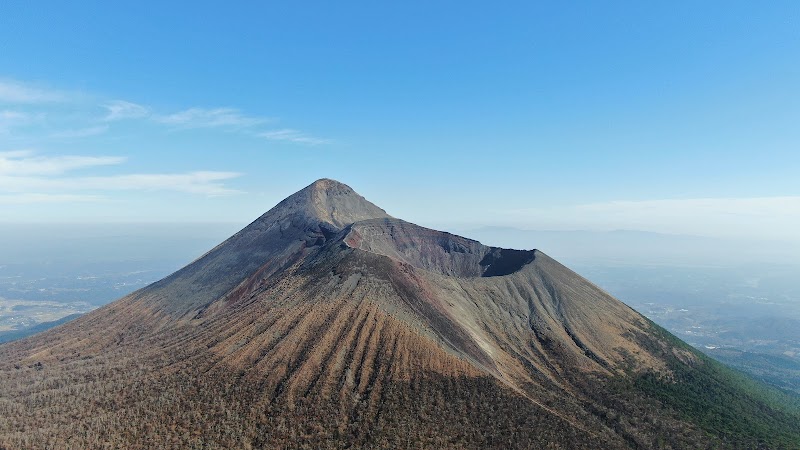Hiking the Volcanic Trails of Kirishima-Kinkowan National Park: A Practical Adventure in Kobayashi, Miyazaki
Explore the volcanic trails of Kirishima-Kinkowan National Park, where steamy craters and dense forest paths challenge and captivate hikers. This guide offers practical tips and vivid trail descriptions to help you plan an unforgettable adventure in the wild heart of Miyazaki.
Bring sturdy, grippy footwear
Volcanic gravel and steep slopes require shoes with excellent traction; hiking boots with solid soles are recommended.
Check volcanic activity alerts before the hike
Some trails may close or become hazardous due to fumarole activity and gas emissions—always verify current conditions.
Start early to avoid midday heat and crowds
Morning hikes mean cooler air, clearer views, and quieter paths, enhancing safety and enjoyment.
Carry sufficient water and snacks
Trail sections are remote with no amenities; 2 liters or more of water and energy-rich snacks help maintain stamina.
Hiking the Volcanic Trails of Kirishima-Kinkowan National Park: A Practical Adventure in Kobayashi, Miyazaki
Kirishima-Kinkowan National Park in Kobayashi, Miyazaki, offers a raw and rugged encounter with volcanic terrain that commands respect and rewards perseverance. The park’s volcanic trails weave through steaming craters, dense forests, and sudden elevations, giving hikers both a physical challenge and a sensory immersion into a landscape forged by fire and time.
The most popular route, the Ebino Kogen to Karakuni-dake trail, stretches roughly 9 kilometers one way, with an elevation gain around 600 meters. Expect variable terrain: volcanic gravel underfoot alternates with wooden boardwalks and patches of mossy forest floor. The trail has clear markers but can be deceptively steep in areas, demanding sturdy shoes with good grip and careful pacing.
From the start, volcanic breath is unmistakable. Steam vents hiss from fissures in the earth, daring you closer with their restless warmth. Forests here feel alive, trees leaning away as if bowing to the volcanic force beneath. Peaks occasionally break through the canopy, revealing panoramic views of crater lakes that shimmer with an otherworldly blue-green.
Timing your hike early in the morning often means cooler air and quieter trails, with mountain breezes carrying the scent of sulfur and pine. The trail pushes you hard on the final ascent to the Karakuni Crater, where acidic fumes cling to the air and the rim offers 360-degree views over the Kirishima chain. It’s a moment where nature is fiercely itself—unforgiving yet breathtaking.
Practical preparation is key. Bring at least two liters of water, layered clothing for sudden weather changes, and trekking poles if you need extra support on steeper sections. Check volcanic activity reports before heading out; parts of the park occasionally close when fumaroles intensify.
Whether you’re a casual hiker or seeking a robust mountain challenge, Kirishima’s volcanic trails deliver unmatched encounters with Japan’s geological power. The terrain tests your endurance and instinct, but the raw beauty and the stories etched in every rock and rustling leaf are worth the effort. Set your pace, respect the land’s fierce character, and the trail will guide you through an unforgettable expedition.
Nearby Trips
All Adventures
Boat Charters
Water Activities
Adventures near Kobayashi
Discover the unique and memorable adventures that make Kobayashi special.
Frequently Asked Questions
Are the trails suitable for beginner hikers?
While the trails are well marked, they involve moderate elevation gain and variable terrain which can be challenging for beginners. Those new to hiking should prepare physically and consider guided options.
What wildlife might I see along the trail?
Expect to spot local birds such as copper pheasants and wagtails, along with occasional Japanese macaques. Early mornings are best for quiet wildlife observations.
Is it safe to hike near active fumaroles?
The park monitors volcanic activity closely and closes trails if gas levels become dangerous. When open, maintaining distance from vents is essential as gases can be hazardous.
Are there facilities like restrooms or water stops on the trail?
Basic restrooms exist near trailheads but there are no facilities along the volcanic trail sections. Hikers must carry their own water and supplies.
How can I get to Kirishima-Kinkowan National Park from Kobayashi city?
Kirishima can be accessed by local buses or a short taxi ride from Kobayashi city. A private car provides the most flexibility for early start times.
Can I camp within the park?
Designated camping areas exist near Ebino Kogen and Mount Karakuni, but campers must register and follow park regulations due to sensitive volcanic environments.
Recommended Gear
Hiking boots with ankle support
Essential for maintaining traction on loose volcanic gravel and protecting ankles on uneven terrain.
Layered clothing
Allows adjustment for fluctuating temperatures and sudden weather changes in mountainous volcanic environments.
Trekking poles
Useful for balance and to reduce leg strain on steep ascents and descents.
Gas mask or respirator (recommended if fumarole activity is high)
Protects against volcanic gases in case of increased fumarole emissions during active volcanic periods.
Local Insights
Hidden Gems
- "Takachiho Gorge viewpoint offers a perspective on volcanic water flows rarely visited by hikers."
- "The quiet rim of Mizunokojima island in the caldera provides peaceful solitude away from the main paths."
Wildlife
- "Copper pheasants strut through forest edges, providing rare glimpses."
- "Japanese macaques frequent a few hidden spring-fed pools beneath the volcanic ridges."
History
"The Kirishima volcanic range holds cultural significance as a site of ancient Shinto worship and mythology, with several shrines along the periphery honoring mountain spirits."
